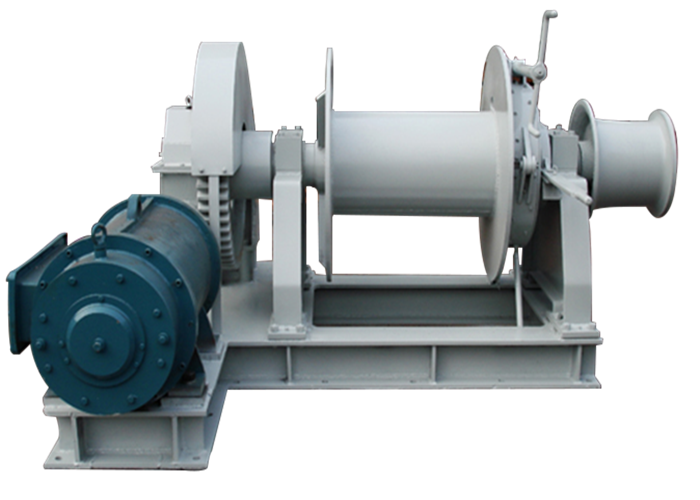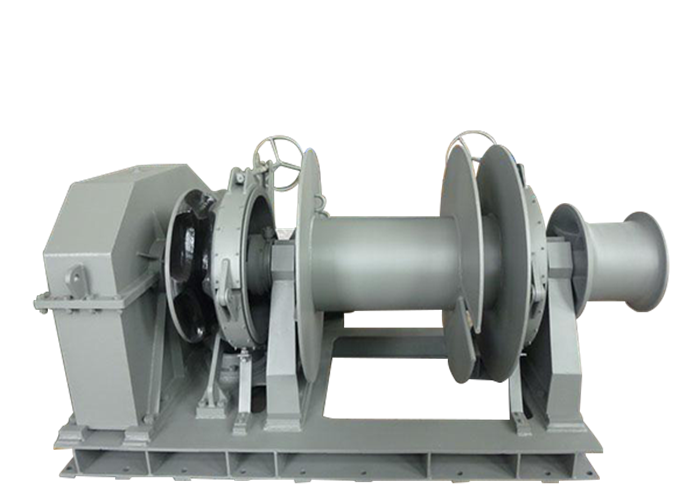Providing power for an electric mooring winch is a critical aspect of ensuring its efficient and reliable operation. Electric mooring winches are essential for securing ships at docks, harbors, and other mooring points. These winches require a stable and sufficient power supply to operate effectively. This guide will cover the necessary steps and considerations for providing power to an electric mooring winch, including power requirements, power sources, installation, and maintenance.

Understanding Power Requirements
The first step in providing power for an electric mooring winch is understanding its power requirements. The power needed for an electric mooring winch depends on several factors, including:
Load Capacity: The capacity of the winch, or the maximum load it can handle, significantly affects the power requirements. Higher capacity winches need more power.
Motor Specifications: The type and specifications of the motor used in the marine winch will determine the voltage and current requirements.
Operational Conditions: The frequency and duration of use can impact power needs. Continuous operation requires a steady power supply, while intermittent use may need less power but higher surge capacity.
Efficiency: The efficiency of the winch and its components will also influence power consumption. More efficient systems require less power for the same output.
Selecting the Power Source
Once the power requirements are understood, the next step is to select an appropriate power source. There are several options for powering an electric mooring winch:
Shore Power: For winches used at docks or harbors, shore power is a common and convenient option. This involves connecting the winch to the local electrical grid.
Advantages: Reliable and typically has sufficient capacity.
Disadvantages: Requires access to shore power connections, which may not always be available.
Generator: In cases where shore power is not available, using a generator is an alternative. Generators can provide the necessary power, especially in remote locations.
Advantages: Portable and can be used in various locations.
Disadvantages: Requires fuel and regular maintenance. Noise and emissions can also be a concern.
Battery Power: For smaller winches or in situations where mobility is crucial, battery power can be an option. Batteries can provide a clean and quiet power source.
Advantages: Portable, quiet, and clean.
Disadvantages: Limited capacity and the need for regular recharging or battery replacement.

Installation Process
Installing the power supply for an electric mooring winch involves several steps:
Site Assessment: Conduct a thorough assessment of the installation site. Determine the availability of power sources, space for equipment, and any potential obstacles.
Electrical Wiring: Proper electrical wiring is crucial for safe and efficient operation. This includes selecting the right cables, connectors, and protection devices.
Cable Selection: Use cables with appropriate voltage and current ratings. Consider the distance from the power source to the winch to minimize voltage drop.
Connectors and Switches: Ensure that all connectors and switches are suitable for marine environments, with appropriate sealing and corrosion resistance.
Power Supply Installation: Install the chosen power source (shore power connection, generator, or batteries) according to winch manufacturer guidelines and local electrical codes.
Shore Power Connection: Install a shore power inlet and connect it to the local grid. Use a suitable marine-grade power cord.
Generator Installation: Place the generator in a secure, ventilated area. Connect it to the winch using appropriate cabling and control systems.
Battery Installation: Securely mount the batteries in a suitable enclosure. Connect them to the winch using heavy-duty cables and battery management systems.
Control Systems: Install control systems to manage the power supply. This may include circuit breakers, fuses, and control panels.
Circuit Breakers and Fuses: Protect the system from overloads and short circuits by installing appropriate circuit breakers and fuses.
Control Panels: Install control panels to monitor and manage the winch operation. Ensure they are easily accessible and user-friendly.
Testing and Commissioning: Once the installation is complete, perform thorough testing and commissioning.
Electrical Testing: Check all electrical connections for continuity and insulation resistance. Verify voltage and current levels.
Operational Testing: Run the winch under load to ensure it operates correctly. Check for smooth operation, proper control response, and any signs of electrical issues.
Maintenance and Safety
Regular maintenance and safety checks are essential to ensure the long-term reliability and safety of the electric winch power supply:
Routine Inspections: Regularly inspect all electrical components for signs of wear, corrosion, or damage. Check cables, connectors, and switches.
Maintenance Schedule: Follow the manufacturer’s recommended maintenance schedule for the winch and power supply equipment. This may include cleaning, lubrication, and part replacements.
Safety Checks: Ensure all safety devices, such as circuit breakers and fuses, are in good working condition. Test emergency stop systems and alarms regularly.
Training: Provide training for personnel on the safe operation and maintenance of the winch and power supply systems. Emphasize the importance of following safety protocols.
Record Keeping: Maintain detailed records of all maintenance activities, inspections, and repairs. This helps in tracking the condition of the equipment and planning future maintenance.
Providing power for an electric mooring winch requires careful planning, selection of appropriate power sources, and meticulous installation and maintenance. Understanding the specific power requirements of the winch, choosing the right power source, and ensuring a proper installation will lead to reliable and efficient operation. Regular maintenance and adherence to safety protocols are crucial to sustaining the system’s performance and longevity. By following these guidelines, you can ensure that your electric mooring winch operates effectively, providing essential support for your marine operations.